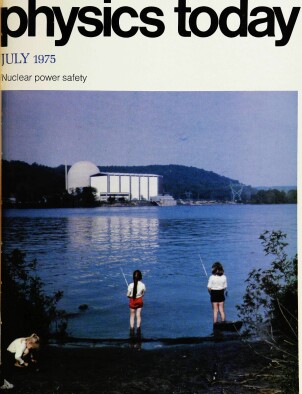Ultrashort phenomena
DOI: 10.1063/1.3069052
Physicists and chemists have gained an impressive amount of new information on rapid phenomena in materials by using sophisticated new techniques for handling picosecond light pulses. The reason for the great growth of interest is not solely the development of new techniques for probing this time region, but also its importance for understanding the most fundamental processes in materials physics and chemistry. Since particle‐collision rates within materials are rapid, the picosecond time scale is the appropriate gauge for a larger number of energy‐transfer processes in substances.
This article is only available in PDF format
References
1. P. M. Rentzepis, Science 169, 17 (1970).https://doi.org/SCIEAS
2. A. De Maria, W. Glenn, M. Mack, PHYSICS TODAY, July 1971, page 19.
3. R. R. Alfano, S. L. Shapiro, Scientific American, June 1973, page 42.
4. A. Laubereau, W. Kaiser, Opto‐electron. 6, 1 (1974).
5. N. Bloembergen, IEEE J. Quantum Electron. 10, 375 (1974).https://doi.org/IEJQA7
6. K. B. Eisenthal, Acc. Chem. Res. 8, 118 (1975).https://doi.org/ACHRE4
More about the Authors
Robert R. Alfano. Associate Professor of Physics, City College of the City University, New York.
Stanley L. Shapiro. Division of Los Alamos Scientific Laboratory.




